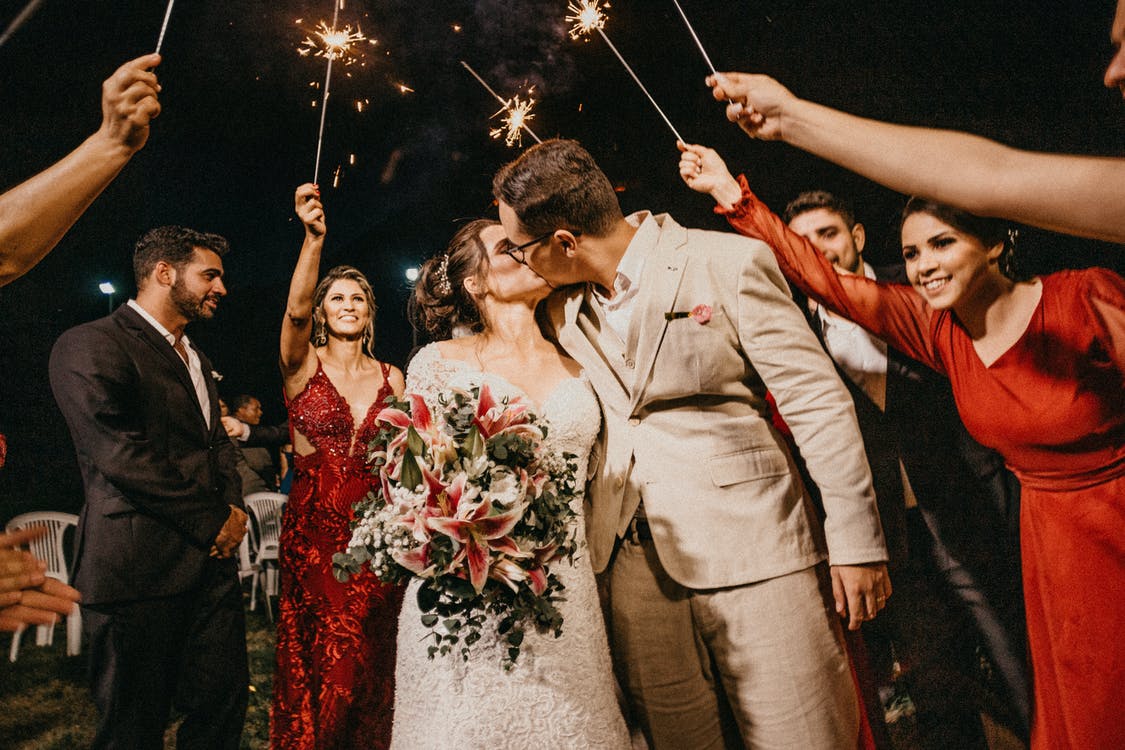Ordering Wine for Wedding Banquets
Wine has long been the emblem of life and spirit. It is a must at any celebration, and weddings are incomplete without wines and champagnes. Despite this, we often pay very little attention to the ordering of wine. It is considered the job of a connoisseur, and is left to the caterer, who often makes a hefty margin on this aspect.
Choosing Wines
The choice of wine should be made on the basis of the common preferences of the invitees, the budget considerations, the season, and the entries and main course planned. It is not uncommon, and often recommended, to hold a small gathering of friends for wine tasting, before placing the final order.
The general rule of thumb, of course, is to choose a white wine, a red, a dessert wine like Banyuls or Sauterne, and of course, a champagne. The idea is to choose wines that would be easy to drink, popular and yet enjoyable to the majority.
Quantity Estimation
While considering the guest list, it is safe to guess that women will opt for the white and men generally for the red. If it is a day wedding, the alcohol consumption may be lesser than at a dinner reception. For quantity estimates, experts say that a bottle of wine will make five to six drinks and a champagne bottle will yield six to eight, depending on the size of the flute. One drink per hour per person is a good average, and can be adhered to, if the serving is monitored.
Pairing Wine and Food
If budget is of no consideration, the choices can be made freely and purely on the basis of the season and the food served. White wines like Chardonnay or Sauvignon Blanc, or sparkling wines from the best years and vintages can be picked up to complement dishes with chicken, fish, lobster and pork, and for hors d’oeuvre and antipasto. These go well with seafood as well. For red meat, roast game, or pastas in red sauce however, a Cabernet or Merlot is called for, as only red wines have the strength, body, and flavor to match up to these courses. Barolo, Chianti, and Shiraz could be the other options. One would also do well to remember that lighter wines do well in summer and heavier reds in winter.
Consider Your Budget
If working on a limited budget, it is also quite possible to make the occasion special, there are many vintages of Chardonnay at affordable prices, as are Sauvignon Cabernets. A Zinfandel is yet another popular and affordable white. Wines from New Zealand, Australia and South Africa do not boast of long heritages, but can be very satisfying to the palate. A Beaujolais Noveau is good for a late November or early December wedding, and is ideal for weddings as it invokes the spirit of celebration of new beginnings. Exhaustive discussions and tasting sessions with the wine merchant are called for, and negotiations for bulk rate are important, as most bulk deals attract discounts up to 15%.
Always consider the in house wines of the restaurant or hotel which is the venue for the reception, as these will be available at good rates. The champagnes can be everything from Mumm varieties to Dom Perignon, but more reasonable options are available. The essential qualities of champagne for a wedding party are its lightness, fizz and frivolity. Vintage champagnes even if within the budget, are better enjoyed on more intimate occasions. An estimate of two champagne toasts per guest is usually sufficient.
Your Own Opinion Counts
Wine is very complex; its taste as varied as the number of grape varieties and their combinations. Sipping a glass of red or white is not only a thrill for the taste buds; the senses of sight, smell and touch are all involved. But that should not deter you from forming your own opinions, likes and dislikes. As Galileo put it long ago, Wine is sunlight held together by water, and it is to this that you must do justice, and order your favorite piece of sunlight for your wedding.

